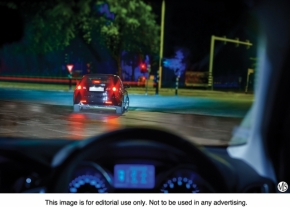See and be seen: How drivers can see better at night and make themselves more visible to fellow motorists
(MS) — Though fewer cars are on the road at night than during the daytime, driving at night is still dangerous. In fact, the National Safety Council notes that drivers’ risk of being in fatal car crashes is three times greater at night than it is during the daytime.While a host of factors combine to make driving at night less safe than driving during the daytime, poor nighttime visibility is one of the biggest contributors to driver discomfort at night. Depth perception, color recognition and peripheral vision can diminish at night. Though many drivers recognize that their own visibility is compromised at night, few may consider that others motorists’ nighttime visibility is similarly affected. Fortunately, there are a handful of ways that drivers can improve their visibility and make themselves more visible to fellow motorists when operating motor vehicles after the sun goes down.
• Get enough sleep. A recent poll from the National Sleep Foundation found that 13 percent of drivers acknowledged falling asleep while driving at least once per month. Poorly lit roadways and the absence of natural light can make tired drivers even more drowsy, furthering compromising their already diminished visibility. The NSF advises drivers to get between seven and nine hours of sleep per night, to avoid driving if they have been awake for 24 hours or more and to pull over for rest every two hours.
• Improve vehicle lighting. Compared to the standard incandescent lamps used by many of today’s automotive manufacturers, LED lights are brighter and more visible to oncoming motorists. Unlike incandescent bulbs, Philips Vision LEDs remain bright and maintain their light intensity throughout the life of the lights. LEDs also can brighten up interior lights, such as courtesy, dome, trunk and glove box. In addition, Vision LEDs were designed to be highly resistant to the extreme heat and vibrations that threaten standard incandescent bulbs, thereby increasing their durability and longevity.
• Get routine vision checkups. Vision checkups are necessary for all drivers, but especially so for aging motorists. According to the American Optometric Association, the diminished vision that many drivers experience when driving at night increases with age, highlighting the importance of annual vision checkups. The AOA also recommends that drivers minimize distractions when driving at night so they can better focus on the road ahead.
• Make your vehicle more visible. Even drivers who are comfortable driving at night must share the roads with other motorists, who may not be as relaxed driving after sundown. Philips Vision LEDs turn on instantly and can be installed as replacements for manufacturers’ brake and taillights, side markers, turn signals and back up lights, making vehicles more visible to fellow motorists and greatly decreasing reaction time. Brighter and therefore more visible to fellow drivers than standard incandescent bulbs, Vision LEDs employ instant-on response technology that can reduce braking distance by up to 20 feet at speeds as high as 75 miles per hour.
Drivers who are uncomfortable driving at night can employ several strategies to alleviate that discomfort. More information is available at www.philips.com/visionled. SC173901


